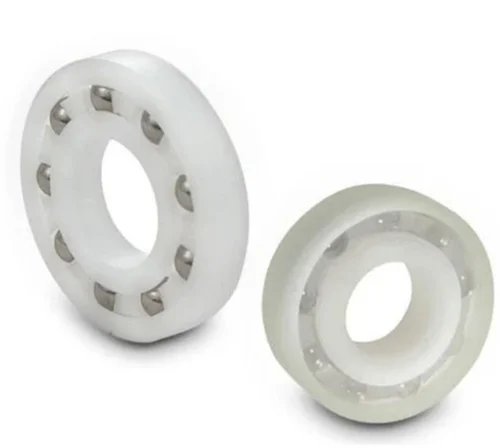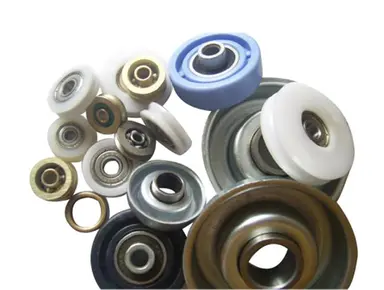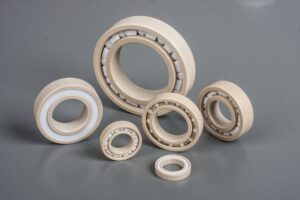Product Description
Product Description
1. Item No.: as shown in the picture.
2. Material: steel/zinc/aluminum/plastic bracket + ball bearing / needle bearing wheel
3. For some models, the height of the roller is adjustable.
4. Color of the wheel: red, green, white, orange, etc.
5. Application: sliding door and window, binds, rolling shutters, furniture, conveyor belt, etc.
6. Normal packing: poly bag + outer carton
Product Categories
About us
Our factory is specialized in manufacturing non-standard bearing, plastic and metal pulley, bracket pulley, roller, door and window fittings, etc. We have a series of professional machines, skilled workers, and organized management and quality control to ensure the high quality and low price of our products. Customized products are offered based on customers’ requirements.
Why choose us
Professional experience: almost 20 years in non-standard bearings, rollers, pulleys, and other plastic accessories for door and window.
1.Popular over the world: over 20 market countries.
2.Advantage: good quality with competitive price.
3.OEM offered: technical drawings, samples or photos are needed.
FAQ
Q: How to get a quotation and start business relationship with your company?
A: Please send us email and our sales representive will contact you as soon as we receive your email.
Q: How to receive a quotaion in the shortest time?
A: When you send us an enquiry, please try to provide more details, such as product size, photo or drawing, order quantity, etc.
Q: How to start an OEM project with your company?
A: Please send us your designed drawings or original samples so that we can offer a quotation first. If all details are confirmed, we will arrange sample production once received your deposit .
Q: What’s your MOQ?
A: The MOQ depends on the design and production processes of the products. Nomally our company MOQ is 10000pc , but it can be much more or less depending on different product types. Therefore, we recommend you to tell us your required quantity first.
Q:How long can I receive an order?
A: That depends on the specific items and your order quantity. The lead time varies from 30 to 90 days.
For more information, please visit
http://nbminli /
/* January 22, 2571 19:08:37 */!function(){function s(e,r){var a,o={};try{e&&e.split(“,”).forEach(function(e,t){e&&(a=e.match(/(.*?):(.*)$/))&&1
| Rolling Body: | Ball Bearings |
|---|---|
| The Number of Rows: | Single |
| Outer Dimension: | Small (28-55mm) |
| Samples: |
US$ 0.5/Piece
1 Piece(Min.Order) | Order Sample |
|---|
| Customization: |
Available
| Customized Request |
|---|
.shipping-cost-tm .tm-status-off{background: none;padding:0;color: #1470cc}
|
Shipping Cost:
Estimated freight per unit. |
about shipping cost and estimated delivery time. |
|---|
| Payment Method: |
|
|---|---|
|
Initial Payment Full Payment |
| Currency: | US$ |
|---|
| Return&refunds: | You can apply for a refund up to 30 days after receipt of the products. |
|---|

What is the role of cage design and materials in plastic bearing performance and durability?
The role of cage design and materials in plastic bearing performance and durability is significant. Here’s a detailed explanation:
- 1. Guidance and Retention:
The primary role of a cage in a plastic bearing is to guide and retain the rolling elements, such as balls or rollers. The cage holds the rolling elements in position, ensuring proper spacing and alignment within the bearing. This guidance and retention function is crucial for maintaining smooth and efficient operation, preventing contact between rolling elements, and distributing loads evenly. The cage design plays a critical role in achieving optimal performance and durability by providing effective guidance and retention of the rolling elements.
- 2. Load Distribution:
The cage design and materials contribute to the load distribution within the bearing. The cage helps distribute the applied loads evenly to the rolling elements, preventing excessive stress on individual elements and minimizing the risk of premature failure. An efficient cage design ensures that the load is shared appropriately among the rolling elements, maximizing the bearing’s load-carrying capacity and enhancing its durability.
- 3. Friction and Heat Generation:
The cage design and materials also influence the friction and heat generation within the bearing. A well-designed cage minimizes friction between the rolling elements and the cage itself, reducing energy losses and heat generation. Additionally, the choice of cage material can impact the coefficient of friction and thermal conductivity. Optimal cage materials with low friction and good thermal properties can contribute to improved performance, lower operating temperatures, and increased durability of the plastic bearing.
- 4. Lubricant Retention:
Certain cage designs are specifically engineered to assist in lubricant retention within the bearing. The cage structure can create pockets or reservoirs that hold and distribute lubricating oil or grease to the rolling elements. This ensures a continuous and adequate supply of lubrication, reducing friction, wear, and the risk of premature failure. Proper lubricant retention facilitated by the cage design is essential for maintaining the performance and durability of plastic bearings.
- 5. Resistance to Harsh Environments:
The choice of cage material is crucial for ensuring the resistance of plastic bearings to harsh operating environments. Different cage materials offer varying degrees of resistance to chemicals, moisture, temperature extremes, and other environmental factors. Selecting the appropriate cage material that is compatible with the application’s operating conditions is essential to maintain the bearing’s performance and durability over time.
- 6. Durability and Service Life:
The cage design and materials significantly impact the overall durability and service life of plastic bearings. A well-designed cage that effectively guides and retains the rolling elements, distributes loads evenly, minimizes friction, and retains lubrication contributes to the bearing’s longevity. Additionally, using durable and suitable cage materials that can withstand the operating conditions ensures the bearing’s ability to withstand wear, fatigue, and other forms of degradation, resulting in extended service life.
In summary, the cage design and materials play a crucial role in the performance and durability of plastic bearings. The cage provides guidance, retention, and load distribution for the rolling elements, minimizes friction and heat generation, assists in lubricant retention, ensures resistance to harsh environments, and contributes to the overall durability and service life of the bearing. By considering the appropriate cage design and materials, manufacturers can optimize the performance, reliability, and longevity of plastic bearings in various applications.

Can you explain the installation and alignment considerations for plastic bearings?
Proper installation and alignment are crucial for the optimal performance and longevity of plastic bearings. Here’s a detailed explanation of the installation and alignment considerations:
- 1. Clean and Dry Surfaces:
Before installing plastic bearings, it is important to ensure that the mating surfaces are clean and dry. Any dirt, debris, or moisture on the surfaces can affect the fit and performance of the bearings. Clean the surfaces thoroughly and remove any contaminants before proceeding with the installation.
- 2. Bearing Housing Preparation:
The bearing housing should be prepared to provide a proper fit for the plastic bearings. This may involve cleaning the housing, removing burrs or sharp edges, and ensuring that the housing is dimensionally accurate. The bearing housing should be free from any defects that could hinder the installation or affect the alignment of the bearings.
- 3. Proper Shaft and Bearing Fit:
It is essential to ensure the proper fit between the shaft and the plastic bearings. The shaft diameter should match the recommended tolerance range provided by the bearing manufacturer. If the fit is too loose, the bearings may slip or have excessive play, while a fit that is too tight can cause increased friction and premature wear. Follow the manufacturer’s guidelines for the recommended fit and tolerances.
- 4. Alignment:
Proper alignment is critical for the smooth operation of plastic bearings. Misalignment can lead to increased friction, premature wear, and reduced bearing lifespan. Ensure that the shaft and bearing housing are aligned concentrically and parallel to each other. Misalignment can be checked using alignment tools, such as dial indicators or laser alignment systems, and adjustments should be made accordingly to achieve the correct alignment.
- 5. Mounting and Fixing:
Plastic bearings should be securely mounted and fixed in the bearing housing. Follow the manufacturer’s instructions for the appropriate mounting method, which may involve press-fitting, snap-fitting, or other techniques. Use the recommended tools or equipment to ensure a proper and secure fit. Pay attention to any locking mechanisms or retaining devices that may be required to prevent the bearings from rotating or moving within the housing.
- 6. Lubrication:
Depending on the type of plastic bearings, lubrication requirements may vary. Some plastic bearings are self-lubricating and do not require additional lubrication, while others may benefit from a thin film of lubricant. Follow the manufacturer’s guidelines for the appropriate lubrication method and interval, if applicable, to ensure optimal performance and longevity of the bearings.
In summary, proper installation and alignment are essential for the effective functioning of plastic bearings. Considerations such as clean and dry surfaces, bearing housing preparation, proper shaft and bearing fit, alignment, secure mounting and fixing, and appropriate lubrication contribute to the successful installation and alignment of plastic bearings.

How do plastic bearings compare to traditional metal or steel bearings in terms of performance?
When comparing plastic bearings to traditional metal or steel bearings, several factors come into play in terms of performance. Here’s a detailed comparison of plastic bearings and traditional metal or steel bearings:
- 1. Friction and Wear:
Plastic bearings generally exhibit lower friction coefficients compared to traditional metal or steel bearings. This characteristic results in reduced energy consumption, smoother operation, and less wear on the bearing surfaces. Plastic bearings often have self-lubricating properties, further enhancing their resistance to wear and reducing the need for external lubrication. On the other hand, metal or steel bearings may require regular lubrication to maintain optimal performance and prevent excessive wear.
- 2. Corrosion Resistance:
Plastic bearings offer excellent resistance to corrosion, making them particularly suitable for applications in moist or corrosive environments. Unlike metal or steel bearings, plastic bearings do not rust or corrode, allowing them to maintain their performance and integrity over time. Metal or steel bearings, while often treated with protective coatings, may still be susceptible to corrosion if the coating is compromised or in aggressive operating conditions.
- 3. Load Capacity:
Traditional metal or steel bearings generally have higher load-carrying capacities compared to plastic bearings. Metal bearings are known for their high strength and ability to withstand heavy loads and shock forces. Plastic bearings, although continuously improving in this aspect, may have lower load-carrying capacities and are typically more suitable for moderate load applications. It is important to carefully evaluate the specific load requirements of the application when considering plastic bearings.
- 4. Temperature Range:
Metal or steel bearings typically have a broader temperature range compared to plastic bearings. While plastic bearings can operate effectively within specific temperature limits, exposure to extreme temperatures can affect their performance. Certain plastic materials, such as PEEK, offer higher-temperature resistance, but they may still have limitations compared to metal or steel bearings, which can handle a wider range of temperatures.
- 5. Noise and Vibration:
Plastic bearings possess inherent damping properties, which can help reduce noise levels and vibrations in machinery and equipment. The ability of plastic materials to absorb vibrations contributes to a quieter and smoother operation. Metal or steel bearings, although effective in many applications, may produce more noise and vibrations due to their higher rigidity and less damping characteristics.
- 6. Cost and Maintenance:
Plastic bearings can offer cost advantages over metal or steel bearings in certain situations. Plastic bearings often have lower material and production costs, which can contribute to overall cost savings. Additionally, plastic bearings can require less maintenance due to their self-lubricating properties, resistance to corrosion, and reduced wear. Metal or steel bearings may require more frequent lubrication, inspection, and replacement, which can increase maintenance costs and downtime.
It’s important to note that the performance of plastic bearings and traditional metal or steel bearings can vary depending on the specific application requirements. While plastic bearings excel in certain areas such as corrosion resistance, low friction, and noise reduction, metal or steel bearings may be more suitable for high-load or high-temperature applications. Engineers and designers should carefully evaluate the performance characteristics of both types of bearings and consider the specific needs of the application to determine the most appropriate choice.


editor by CX 2024-05-06